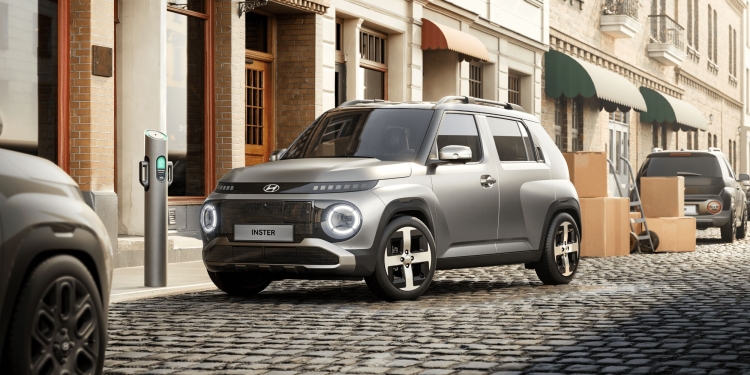Hyundai has officially announced the Inster, its smallest and possibly cheapest Electric Vehicle (EV) yet. Unlike its previous EV models like the Kona and Ioniq 5, the Hyundai Inster is a cute-looking fully electric A-segment car and it’s smaller than a Perodua Ativa.
As the industry pushes for higher EV adoption, the Hyundai Inster seems to be the perfect answer for consumers who need a vehicle that’s both affordable and functional. This is the kind of EV we would want to see from the likes of Proton and Perodua, especially when there’s currently a RM100,000 barrier for imported EVs.
Hyundai Inster specs and features
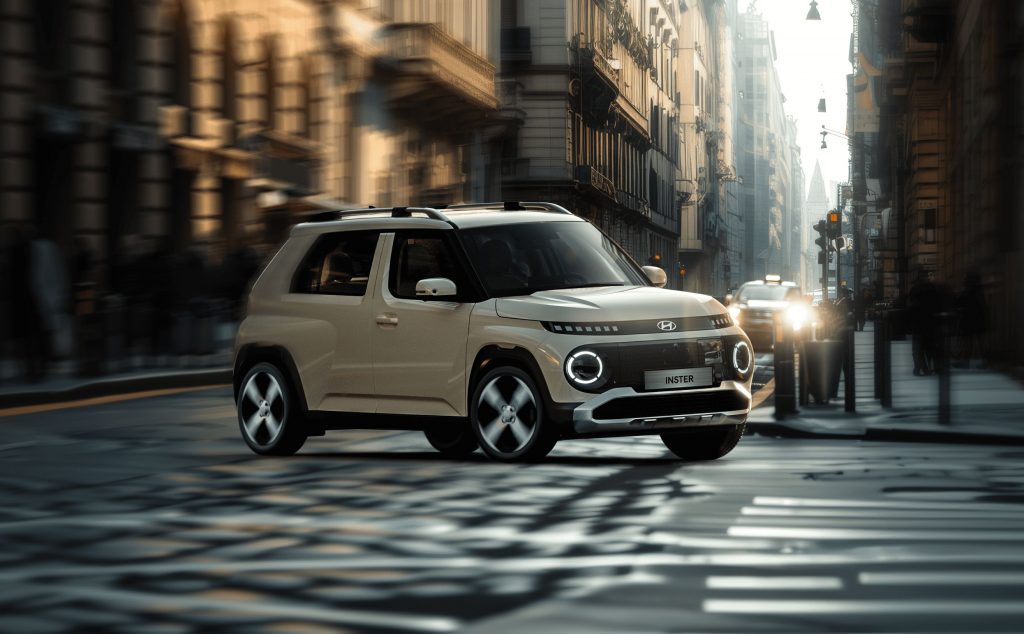
The Hyundai Inster is based on the Hyundai Casper, a 1.0-litre turbo petrol-powered compact SUV that’s sold in South Korea. In fact, the Inster will be marketed as the Casper Electric in its home market.
In terms of design, the Inster looks quite youthful with a couple of interesting elements. The compact EV has a boxy shape and features Honda E-like inspired rounded headlamps and rear lamps. Meanwhile, the rear doors feature hidden door handles on the C-pillar and there are a couple of pixel elements that are carried over from the Ioniq EV family.
In terms of dimensions, it is only 3,825mm long, 1,610mm wide and 1,575mm tall, making it very compact for city driving. Despite its chunky looks, the footprint of the Inster is smaller than a Perodua Myvi which measures 3,985mm long and 1,735mm wide. However, it still looks quite roomy inside thanks to its respectable 2,580mm wheelbase.
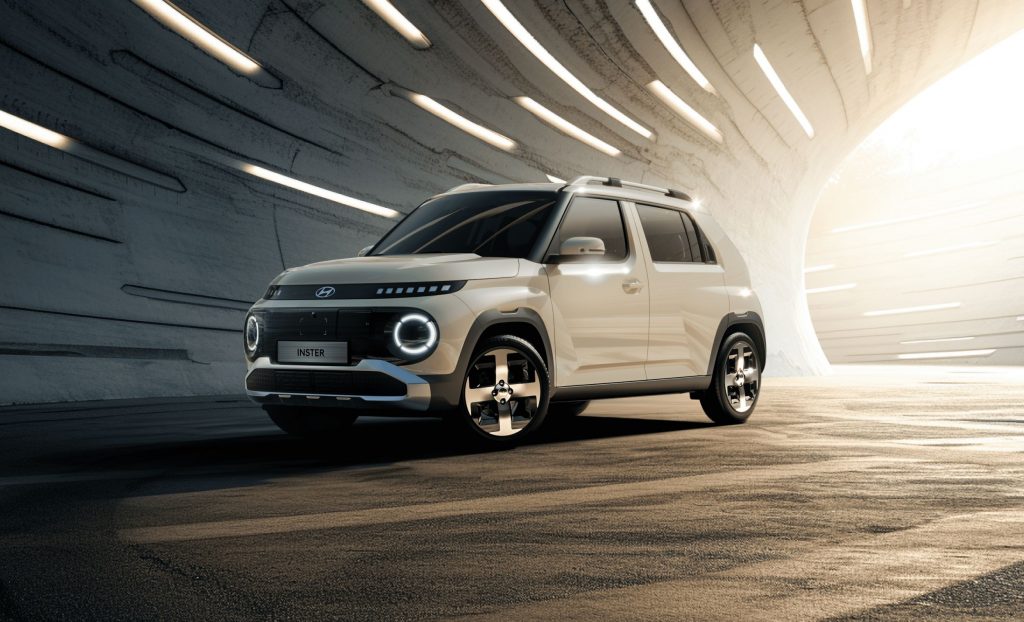
The Hyundai Inster comes in two spec variants, both with a single-motor setup. The base model pushes 71.1kW (95hp) and it can do 0-100km/h in 11.7 seconds, up to a top speed of 140km/h. Equipped with a 42kWh battery, it boasts a projected WLTP-rated range of 300km on a single charge.
Meanwhile, the Long Range model has slightly more performance with a 84.5kW (113hp) motor, that can propel this compact SUV from 0-100km/h in 10.6 seconds, up to a top speed of 150km/h. The battery is slightly bigger too at 49kWh with a projected WLTP-rated range of 350km on a single charge. Both variants offer 147Nm of torque, and Hyundai’s claimed range is based on 15″ wheels with a projected efficiency of 15.3 kWh per 100km.
The Hyundai Inster can be configured with either 17″ (205/45 R17 tyres) alloy wheels, 15″ alloy wheels and 15″ steel wheels with wheel covers.
Due to the low power output, the Inster should be quite cheap to run as it only costs RM50-60 for annual road tax based on the latest formula.
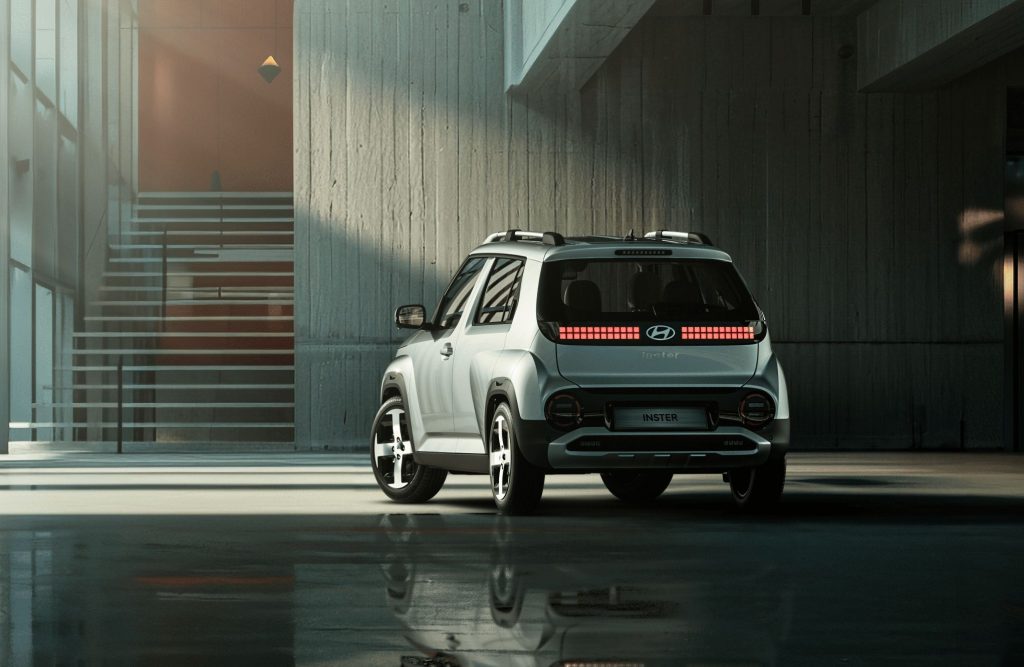
In terms of charging, the Hyundai Inster has an 11kW AC on-board charger and a full charge takes slightly over 4 hours. For DC charging, 10-80% charge can be done in 30 minutes when plugged into a 120kW DC charger. Similar to the Hyundai Kona, the charging port is located on the front bumper which is placed off-centre. The lower bumper also has dynamic air vents which can open up for cooling and close for improved aerodynamics while driving.
The Hyundai Inster also features external and internal Vehicle-to-Load (V2L) functionality, which turns this EV into a giant power bank. This allows owners to power up most home appliances without additional equipment.
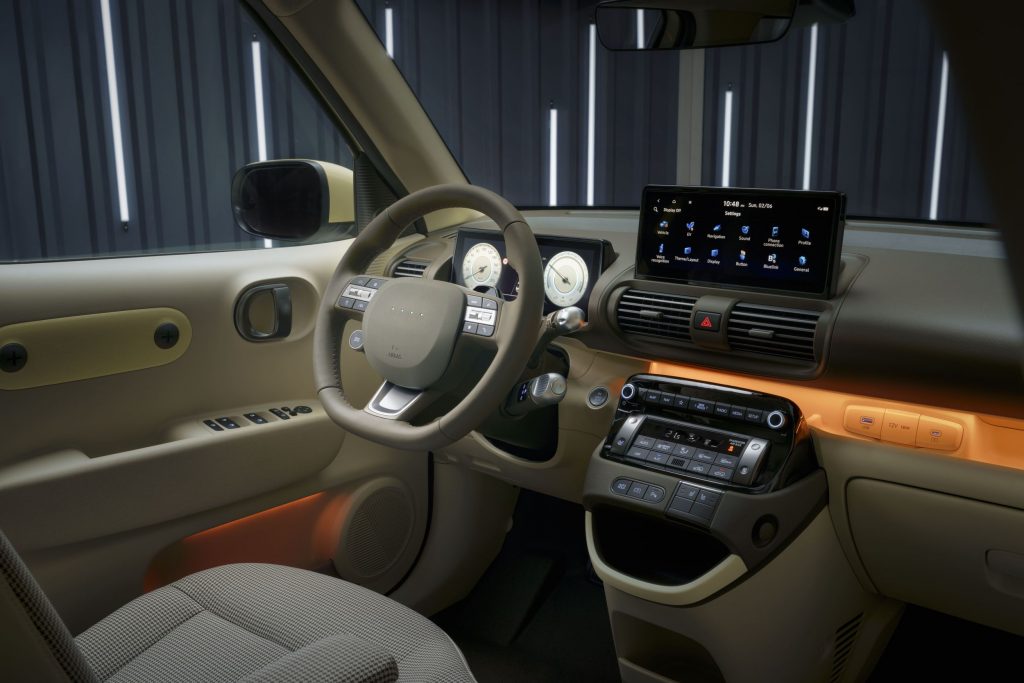
On the inside, it looks quite upmarket for an A-segment EV. The steering wheel looks like it has been taken straight from a Hyundai Ioniq 6 as it has paddle shifters (presumably regen settings), a twisty stalk for the drive selector, and a drive mode button.
It also features two 10.25″ displays for the instrument cluster and infotainment screen, as well as a wireless charging dock on the centre console. Most of the climate and media controls can be adjusted via large physical buttons which is better for usability. The interior also comes with customisable elements on the upper door trim and on the rear panels of the front seats.
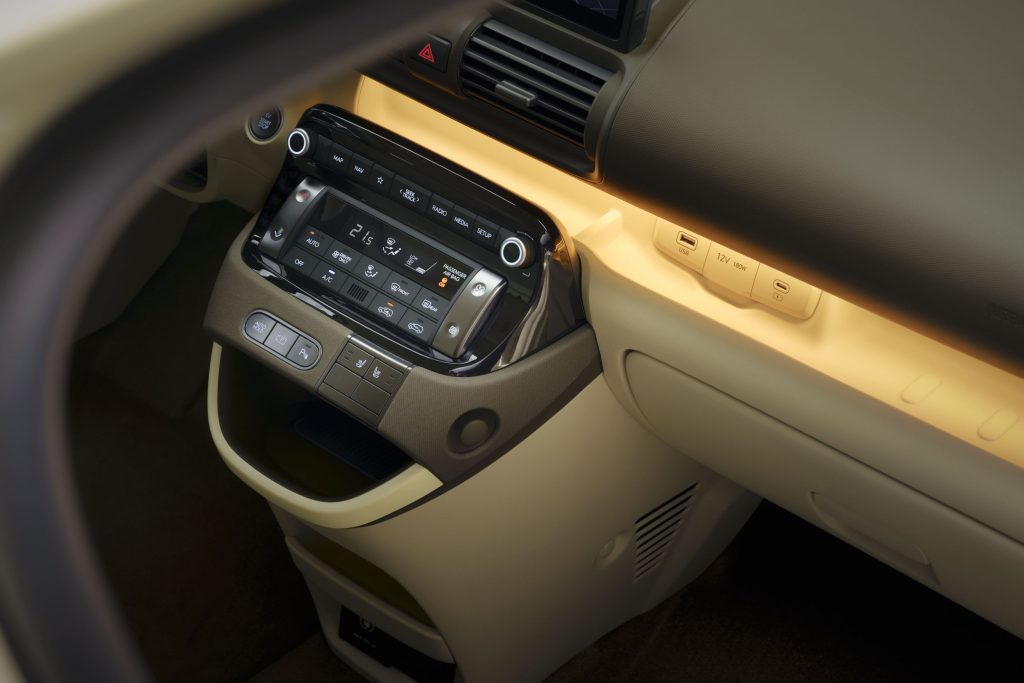
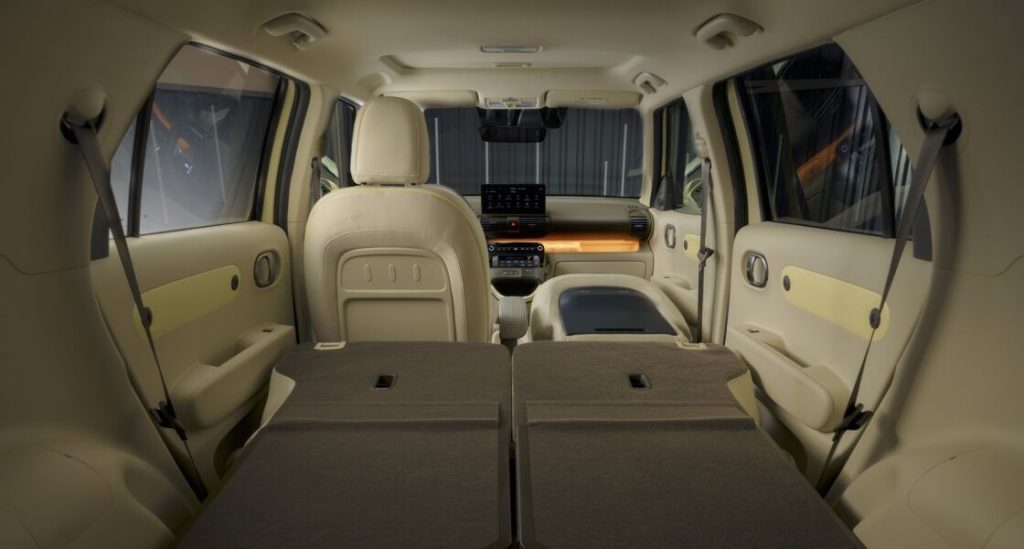
In terms of boot size, it is quite small at 280 litres but you can expand it to 351 litres by sliding the rear seats forward. The rear seats can also recline and offer 50/50 split folding. If you need to carry longer items, all seats can be folded flat including the driver’s seat for increased flexibility.
In terms of safety technology, Hyundai says the Inster offers the most complete technology package in the segment with the inclusion of comprehensive ADAS features such as surround view monitor (SVM), parking collision-avoidance assist rear (PCA-R), Blind-spot View monitor (BVM) and forward collision-avoidance assist 1.5 (FCA 1.5).
There’s also Lane Keeping Assist (LKA) and Lane Following Assist (LFA) are also offered, plus Blind-Spot Collision-Avoidance Assist (BCA), Rear Cross-Traffic Collision-Avoidance Assist (RCCA), Safety Exit Warning (SEW), Smart Cruise Control (SCC) w/ Stop and Go, Highway Driving Assist 1.5 (HDA 1.5), Intelligent Speed Limit Assist (ISLA), Driver Attention Warning (DAW), High Beam Assist (HBA), Leading Vehicle Departure Alert (LVDA) and Rear Occupant Alert (ROA).
Hyundai Inster Availability
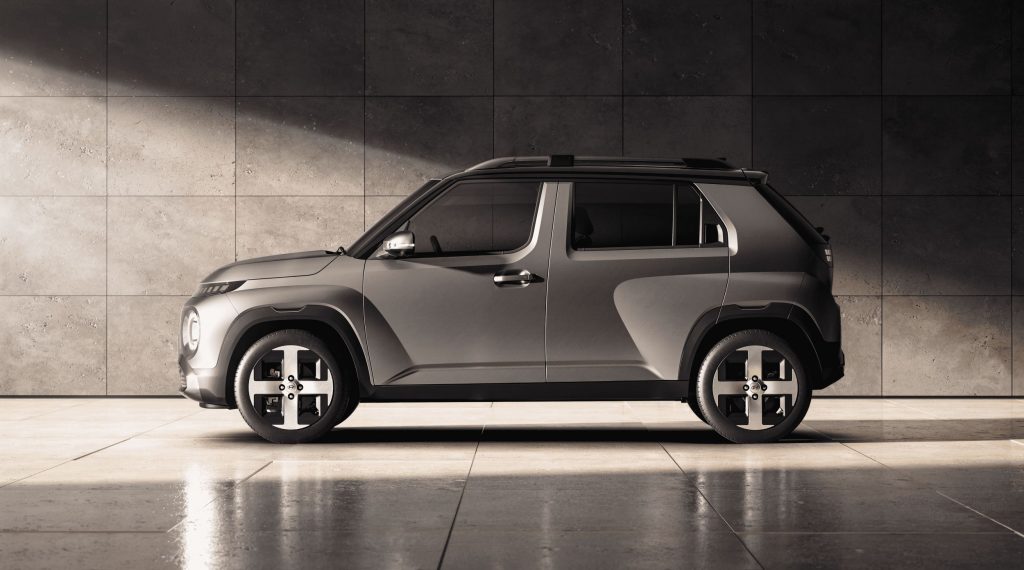
According to the Korean carmaker, the Inster EV will launch first in South Korea this summer. This is then followed by worldwide availability in Europe, the Middle East, and Asia Pacific in due course. So far there’s no pricing details yet.
If you’re looking for something more rugged, Hyundai has teased that an Inster Cross variant will be coming in the future. The Cross version is said to feature a more rugged and outdoor-focused design, and more details will be announced at a later date.
The biggest question is, will Hyundai Sime Darby Motors bring the Inster to the Malaysian market? If yes, how much would it be? If it is priced at RM100,000, this EV will go head-to-head with the likes of the BYD Dolphin. The only possible way to bring the price down lower is if this EV is assembled locally in Malaysia.

